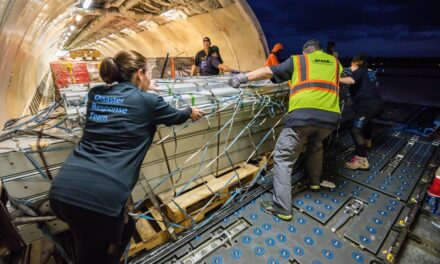
Significant technological advances in Saudi Post The first Arabic Address Reader for Delivery Point Sorting
Udo Miletzki, Product Manager Reading Coding, Siemens AG and
Mohammed H. Al Darwish, Postal Technology Manager, Saudi Post Corporation
World Mail Review November 2008
Introduction
Saudi Post is going through the greatest transformation process in its history, changing from a traditional post to a comprehensive postal service provider uniting postal mail distribution and e-services under one roof.
One essential part of this change was to establish a completely new automation chain for mail distribution from reception to delivery point. To reach this ambitious goal, several obstacles had to be overcome: First, home and street addresses did not exist in Saudi Arabia and people were dependent on mailboxes rented at post offices. To introduce delivery to houses and buildings, Saudi Post had to create a new addressing system, based on a unique grid system of numbers. The successful introduction of this addressing system was a necessary precondition for delivery point sorting and delivery.
Second, reading Arabic and English addresses simultaneously is absolutely necessary in a country where 30-40 % of the mail volume is addressed in Arabic and the rest in English.
Third, for a transition period both old and new postal code systems would be in use: the old 5-digit postal code + PO Box number; and the new one with ZIP+4+4 defining the final destination point. The address reader had to have the capability to interpret both.
Fourth, Saudi Post had to reorganise its total sorting process from manual to automatic sorting with all its implications, such as sorting to traditional PO Box and new delivery point distribution concurrently, direct forwarding, and sequencing.
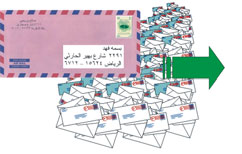
Figure 1 From manual to automatic sorting via postal letter sorting equ
The new Post Code System based on GEO-Data
To be able to address every individual house or building in the Kingdom despite the lack of street names and house numbers, an advanced contemporary addressing system was created. Geographical digital data from city maps were meshed with the GEO-data grid from satellites to make it possible to assign a unique grid number to every residential house and to every commercial or government building.
This GEO-coordinate based number is called the Wasel address, meaning “direct” or “target”address.
Before the introduction of Wasel addresses, people had to go to the letterbox shelter at their nearest post office to fetch their mail. Now, with Wasel addresses on the letters, they can get their mail delivered directly to their residential houses or to their offices. Advanced Postal Address Readers automatically read the whole address including the Wasel address and distribute the mail down to the delivery point.
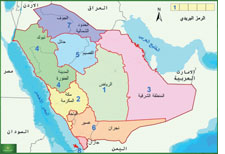
Figure 2 Seven postal zones of KSA
The whole Kingdom is divided into eight zones and every city or residential area is superimposed on this grid showing unique x- and y- GEO-coordinates for every house or building in the Kingdom.
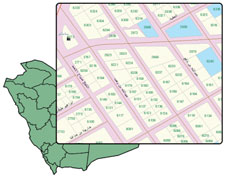
Figure 3 x- and y- coordinates of buildings
If the recipient has moved, mail can be directly forwarded with this new system. This capability is a necessity since at least 45% of citizens move every year. (See Insert.)
Mail can also be automatically sequenced according to the postman’s walk. Beyond this, every postman can see at first glance the destination of a mail piece without knowledge of the surrounding area.
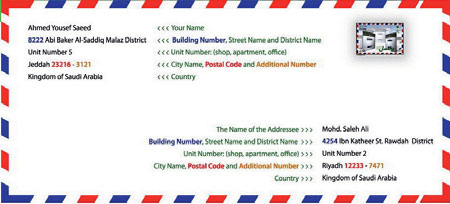
Figure 4 Example of new postal code (ZIP + Wasel Address)
Every citizen can now locate any address after a short familiarisation with the new addressing system. Last but not least, the better orientation through Wasel addresses is also extremely helpful to such organisations as the Red Crescent, firefighters and even taxi drivers.
The multi-lingual approach
The second challenge derived from the properties of the daily mail mix. In Saudi Arabia international and business mail is mostly written in English, but local mail is mostly written or printed in Arabic. As a consequence, mail comes in a language mix. This was one reason Saudi Post decided to adopt the Postal Address Reader from Siemens. (See Insert.)
Its multilingual reading software, called ARTreadTM, is capable of simultaneously reading English and Arabic addresses, no matter whether they are printed or handwritten.
The following specific features for multi-lingual reading are necessary:
1 Early language detection.
2 Address block location with separate parameter sets for English and Arabic.
3 Two separate OCR kernels for the Latin and Arabic alphabets.
4 One common address interpretation for English and Arabic.
Figure 5 Address verification by means of address correlation and matching.
One could think it sufficient to read only the extended postal code. But numbers can mean anything from bank account numbers to telephone numbers. The only thing that makes it unambiguously clear what the number means is context. Therefore, an advanced address reader has to utilise every item of information on the envelope to be sure which direction the mail item has to go. Otherwise the error rate would soar up unacceptably.
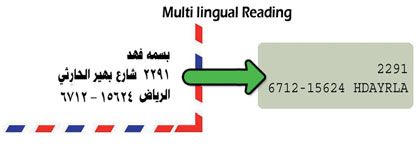
After the transliteration of the characters and words by the respective OCR kernels into a language independent representation, the subsequent address interpretation no longer struggles with differences in alphabets and styles. It verifies the read address elements by matching them with the corresponding reference elements in an address database. This database ideally contains all the allowed reference addresses of the Kingdom. Finally, all related elements are correlated with each other eg city name or place name with the ZIP code.
In the case of Arabic, where printed text looks a bit similar to the art of calligraphic handwriting, the classical way of character segmentation and subsequent recognition was not very promising. Therefore, holistic word recognition as used for speech recognition and connected cursive script addresses was applied. Printed Arabic city names and foreign countries as well as handwritten names and other keywords are thus read with great success.
At the ICDAR 2007* benchmark test for Arabic Handwriting, Siemens received the award for the best recognition of handwritten Arabic words. When it came to accuracy and speed, the Siemens system was far ahead of its competitors in all test categories.
______________________________
*International Conference on Document Analysis and Recognition Automated Sorting
The reading power outlined above without the ability to sort the read mail equals a brain without its body. In short, a completely new sorting system had to be established.
Mail preparation commences when non-machinable mail is separated and facing and cancellation of stamped mail is accomplished.
The subsequent sorting process is then divided into the following steps:
First, the mail is sorted: by country name if sent abroad, by the first digit of the ZIP if sent to other mail centres in Saudi Arabia, or by five-digit ZIP when sent to other cities or localities.
Second, the inward process commences. The mail is sorted by extension number containing the extended postal code, or street and block and primary number for building or house number enabling Wasel sequencing sorting. For traditional PO Box sorting, ZIP and PO Box numbers are used for sorting to the different delivery offices. In both cases the mail will be final sorted for dispatch to delivery offices or for home delivery.
For physical processing, sort plans have to be generated and made effective to assign the address read results to the corresponding stacker numbers. The operator controls the machine system by a state of the art user interface, allowing efficient, ergonomic and user friendly access. User language is Arabic or English. Barcode reading can be used to identify the mail piece during each subsequent pass of the mail piece through the machine, saving significant time and processing costs. Barcode printing is used to apply a barcode to the mail piece, containing the read result delivered by the reader or the video coding system. Forwarding printing is used to apply the postal code in clear text to the mail piece for the carrier. All sorting machines are linked to the mail dispatch management system, MDMS. This is the heart of the Wasel system. All the other interfacing systems either provide data input or receive data output from the MDMS. It collects online data for each letter when it passes the machine and will provide optimised routing information for Wasel sequencing. This output will be transferred to the sorting machine for the sequence sorting process, and pass to the Wasel car via the postman’s hand held terminal. This device contains a navigation system to guide the postman to each delivery destination. On reaching the delivery point he will read the RFID tag incorporated in the Wasel box to provide proof of delivery. When he returns to base the hand held terminal synchronises with the MDMS and informs the customer about the delivery.
Citizens and residents enrolled in the Wasel service can have their mail delivered directly to their home or business addresses. Subscribers own their electronically monitored mail box connected to the network via satellite from which they will be able to send or receive mail, be it ordinary or hybrid.
Summary
Saudi Post has installed an advanced Postal Automation System, working with a new GEO-data based postal code system, a Wasel based infrastructure, an Automatic Letter Sorting Machine, and an OCR for simultaneous reading of Arabic and English addresses. It comprises components for automatic forwarding, sequencing, and video coding. The benefits for Saudi Post and its customers include the shortest possible delivery times at minimum costs with high quality standards.
This innovative approach can be regarded as a new paradigm for the Arab world.
Siemens Reading Software ARTread™:
Siemens sorting equipment using ARTread™ can read and sort up to 60,000 mail pieces per hour and is the core of the fully automated sorting process.
No matter if the addresses are printed or hand written, in Arabic or English, the advanced recognition technology from Siemens can cope with all languages, styles, layouts and address structures and delivers the distribution information to the highest performance standard.
Advanced Forwarding System
In the Kingdom of Saudi Arabia, 45 per cent of the population relocates each year. Therefore, Saudi Post decided to introduce an Automatic Forwarding System (AFS), developed by Siemens. It combines the latest recognition and information technology.
If a letter with an old address is detected at the first sorting machine, AFS automatically passes it on to its new destination. The new address is printed for direct delivery. Similar systems have been introduced in the USA, Germany, Denmark and Switzerland.

